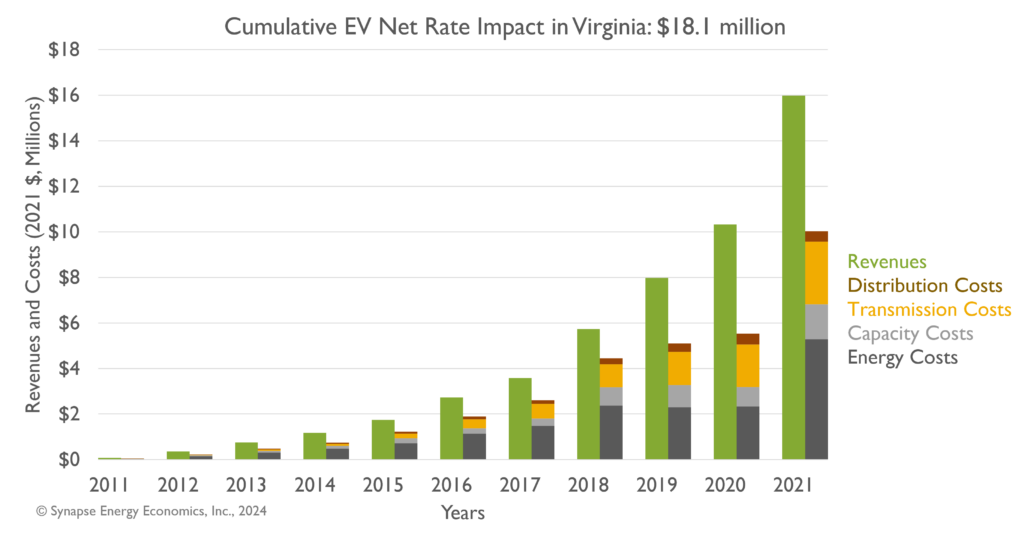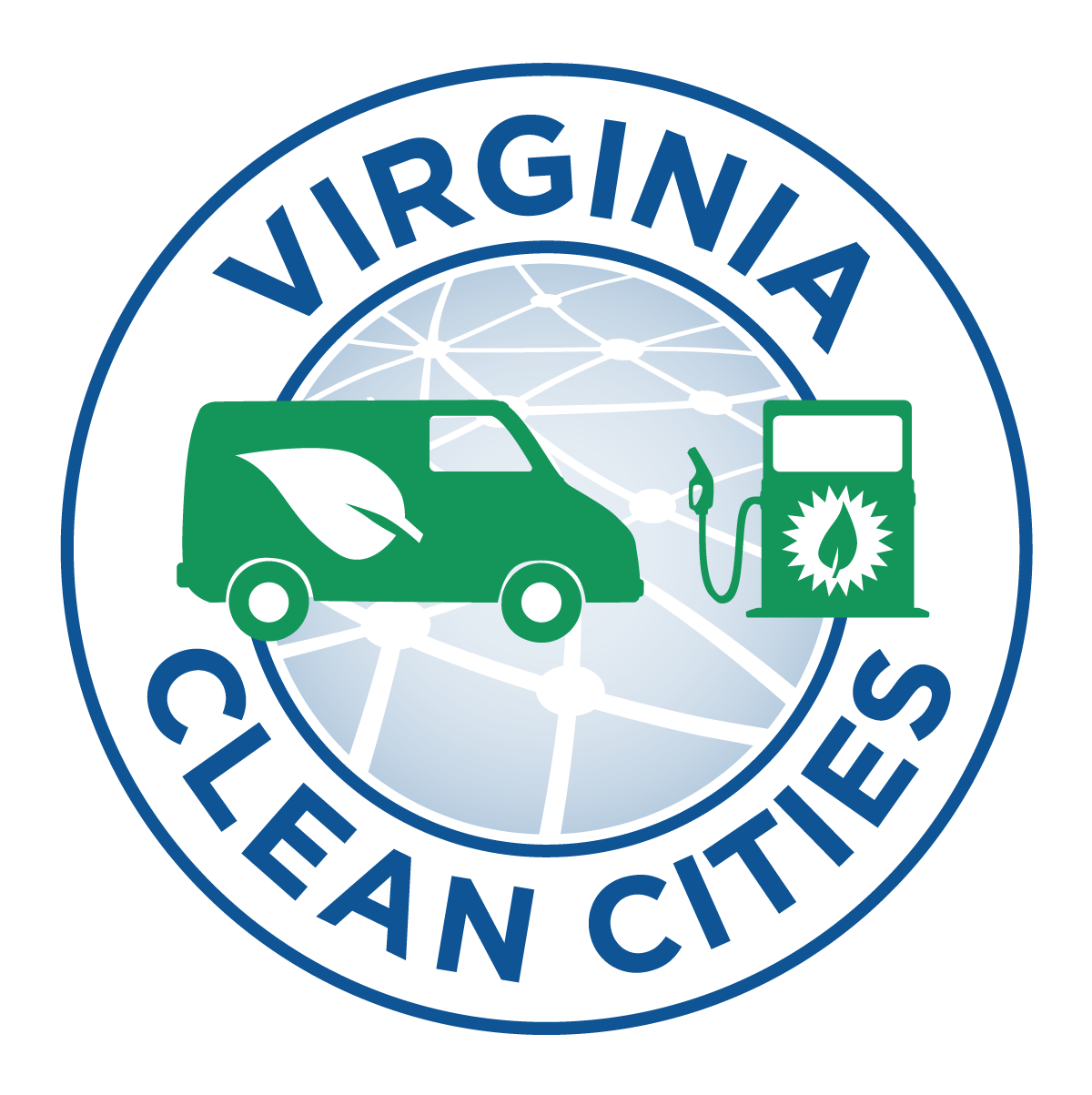
Written by Ella Sher
According to a recent study by Synapse Energy Economics Inc., the growth of Electric Vehicle (EV) usage in Virginia over the course of 11 years (2011-2021) has decreased electricity costs for EV users and all Virginians in electricity use.
This downward cost trend can be attributed to the fact that “electric vehicle drivers in Virginia contributed $18.1 million more to utilities than their associated costs to the grid” (Shenstone-Harris et al., 2024). Out of this number, Synapse identified only $5 million in utility programs that benefit EVs.
With that said, understanding the dollar amounts means understanding EV adoption trends in the state. During the first year of the study, 2011, Synapse recorded only 300 EVs on Virginia roads, compared to the 44,000 seen in 2021. These numbers are projected to continue to rise, as half of all car sales by 2030 are predicted to be EVs. Benefits will increase over time as Virginia Clean Cities is already tracking 100,000 EVs currently in Virginia.
To incentivize specific times to charge, Virginia utilities are exploring the implementation of staggered-cost time-of-use (TOU) tariffs. In Virginia, power companies, like Appalachian Power and Virginia Electric and Power, are starting to offer voluntary EV TOU rates, meaning individuals who charge at home can pay lower rates for the different times they use electricity throughout the day. Initiatives like these benefit both the power companies and EV users in the wallet.
Ultimately, through Synapse’s analysis, the revenues gained from EV utility contributions have begun to heavily outweigh electricity costs in Virginia; thus, benefiting the levels of air pollution nationwide.
Check out the original article below for more information!
